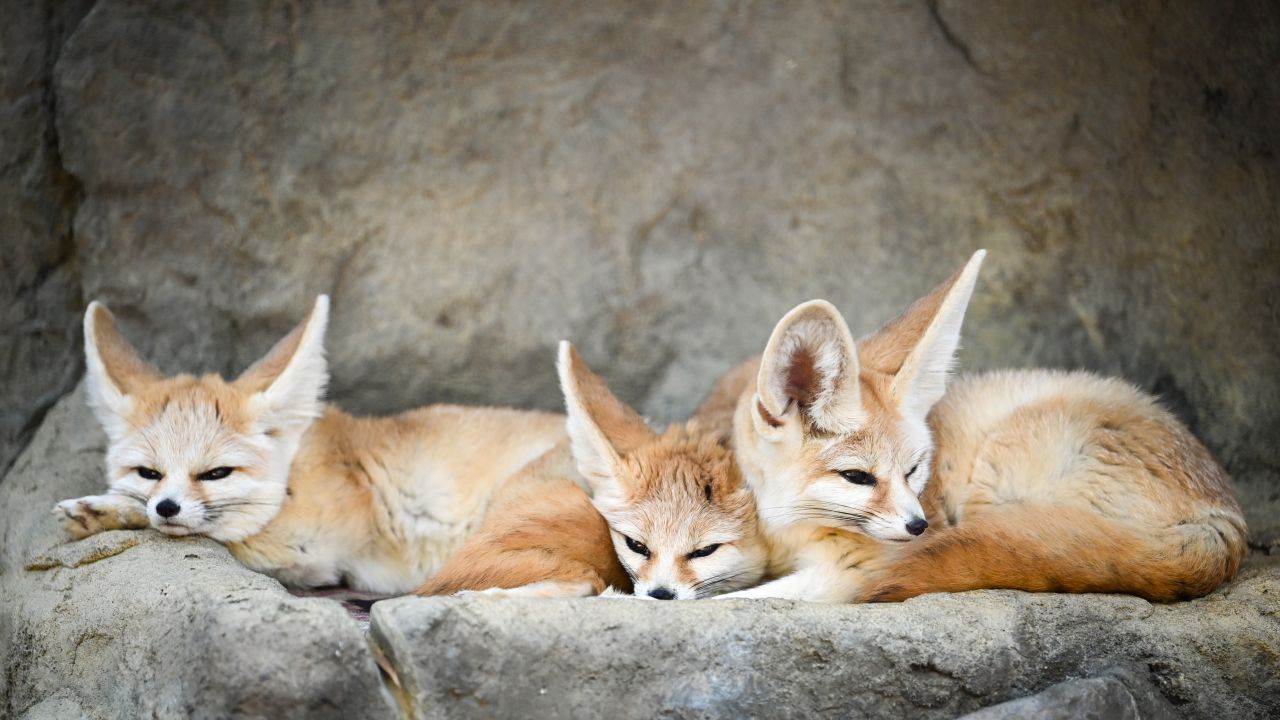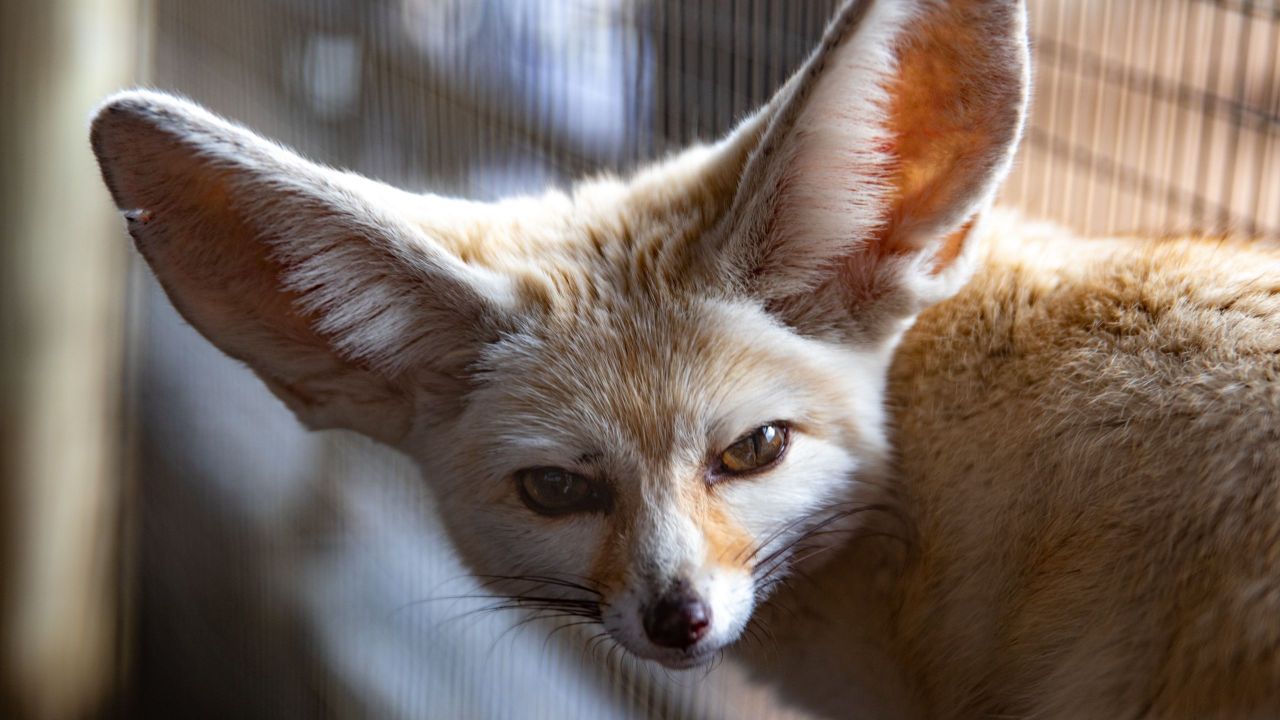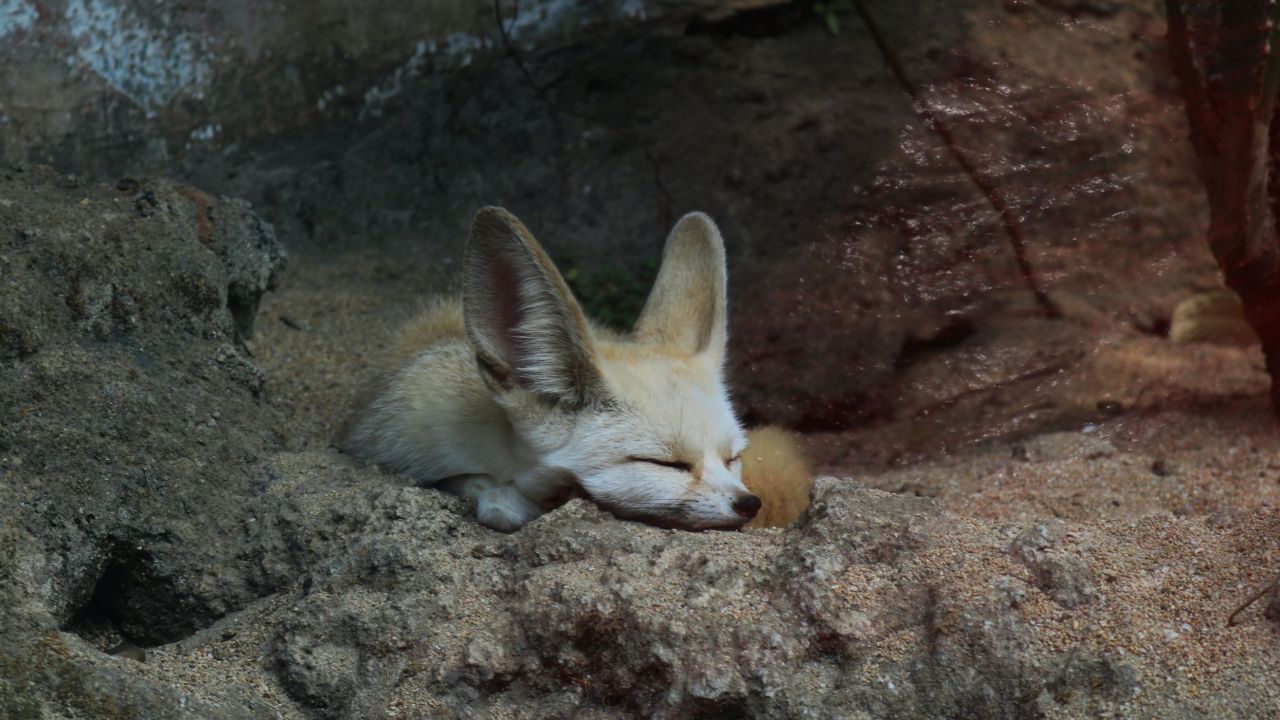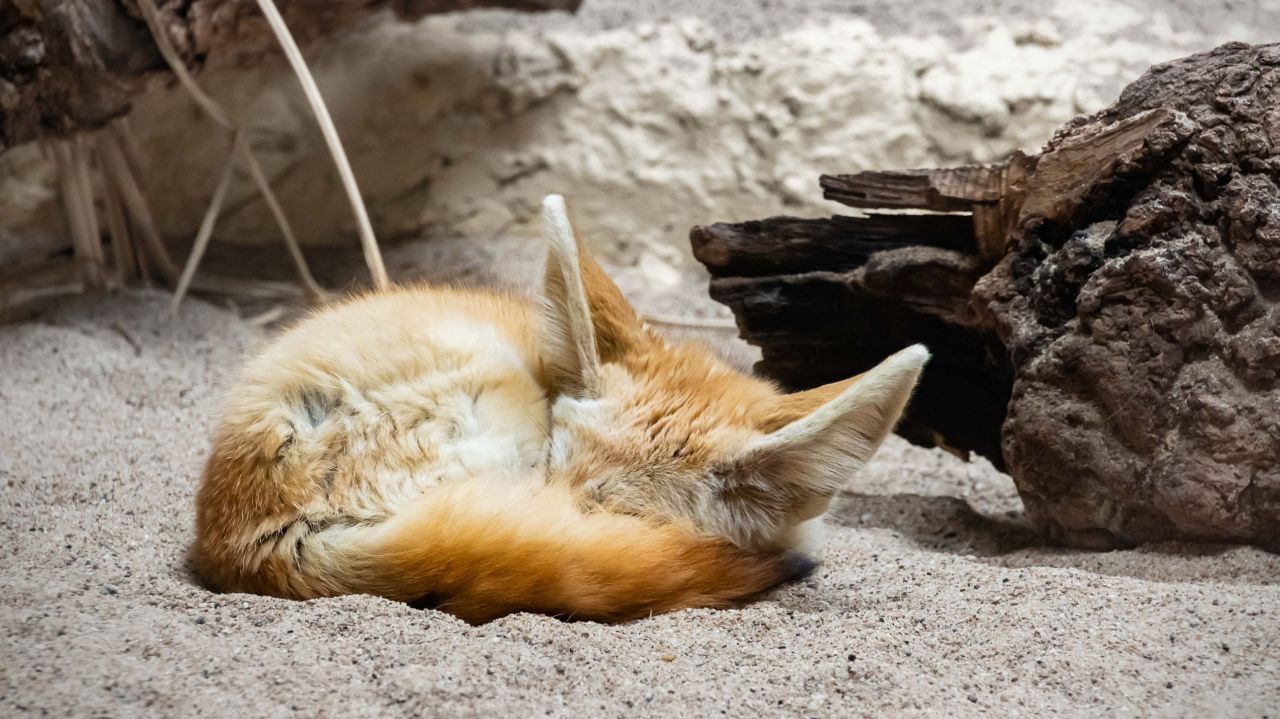
Fennec fox (Vulpes zerda): a small fox native to the deserts of North Africa.
Kingdom: | Animalia
Phylum: | Chordata
Class: | Mammalia
Order: | Carnivora
Family: | Canidae
Genus: | Vulpes
Species: | zerda

Size and Weight:
The fennec fox is the smallest of the foxes. Their head and body are 9.5 to 16 inches long and their tail is 7 to 12 inches long. They stand at 8 inches in height at the shoulders. Their weight ranges from 2 to 3.5 pounds.
Appearance:
Fennec foxes are perhaps best known for their enormous ears. Relative to body size, the fennec fox has the largest ears of any member of the canid family. Their ears are typically 4 to 6 inches long and serve multiple purposes. Their ears help to dissipate excess body heat on hot days. They also help the fox to hear prey in the sand.
A fennec fox has a tiny face with a pointed snout. Their fur is cream in color with a long black-tipped tail. Their fur coats are long, thick and soft with a wooly undercoat, insulating them during cold nights and protecting them from the hot sun during the day.

Diet:
Fennec fox are omnivores. They are nocturnal to avoid the desert heat. Typically at night, they forage for plants as well as lizards, rodents, insects and eggs. They are able to go for long periods without water because their kidneys are specifically adapted to conserve water. They can obtain moisture from the food they eat and by licking the dew that forms in their dens.
Habitat:
Fennec foxes live in arid desert habitats.
Geography:
They are found in the desert zones of North Africa and the Sinai and Arabian peninsulas.

Breeding:
The rutting season, or mating season, typically lasts for four to six weeks. During this period, males are extremely aggressive and mark their territory with urine. Females are in estrus for one to two days, and following mating, the gestation period lasts about 50 days. Prior to and during birth, males defend the females. The male provides food to the female until the pups are about 4 weeks old.
A female typically gives birth to one litter of two to five pups per year. The young are born fully furred but blind. Within their second week, they open their eyes, and at about 2 weeks, they are able to walk. Pups usually nurse for their first 10 weeks and become mature at 9 to 11 months.
Social Structure:
Fennec foxes are monogamous, meaning they mate for life. They dwell in family groups of up to ten individuals. Multiple family groups may share a complex den. These foxes are territorial and mark their territory with urine and feces. They communicate with each other through several noises, including whimpers, barks, shrieks, squeaks, growls, howls or chatters.

Lifespan:
Their lifespan ranges from 10 to 12 years on average.
Threats:
The greatest threats to fennec fox populations are habitat loss and hunting. In North Africa, fennec foxes are trapped for exhibition or sale to tourists. As human populations expand, they are at higher risk of being hit by cars.

Conservation Status:
As of 2015, the IUCN has classified the fennec fox as of Least Concern on its Red List of Threatened Species.
Conservation Efforts:
Fennec foxes are legally protected in Morocco, Algeria, Tunisia and Egypt.
Source: Smithsonian’s National Zoo and Conservation Biology Institute and SeaWorld Parks and Entertainment.
